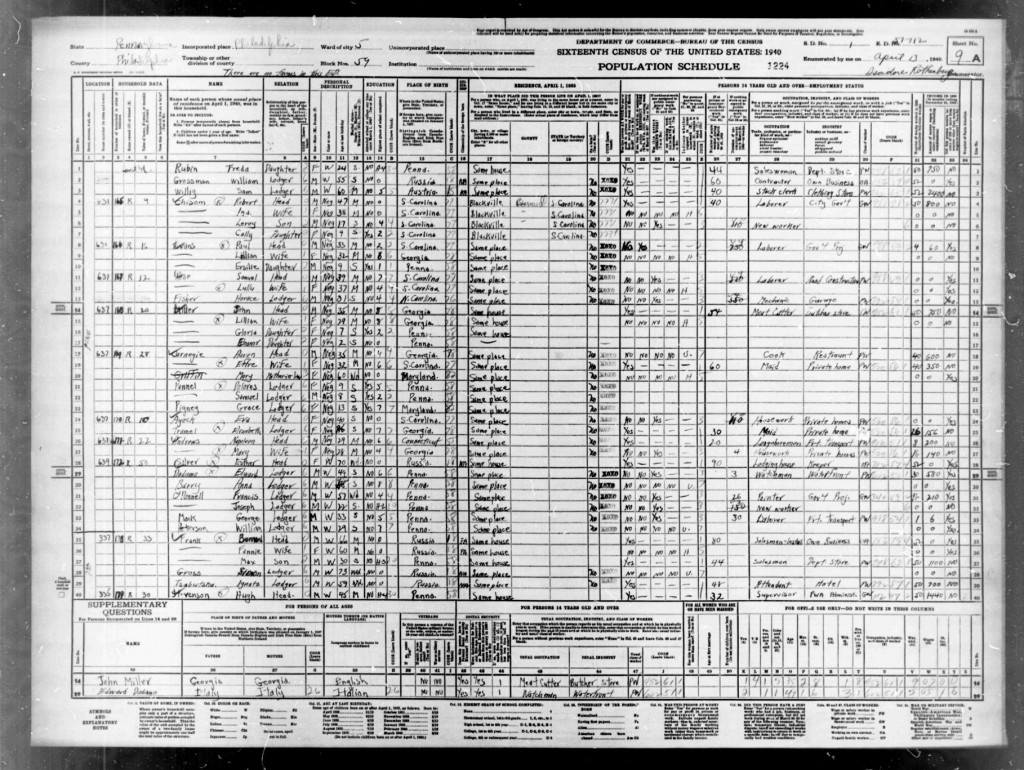Who Lived in Your House in 1940?
Here’s a splendid diversion if you’re a data nerd, a history buff, or even just like good detective work: Tell the story of the family that lived in your house in 1940.
A bit more background. If you are in the United States, you probably remember participating in the Decennial Census in 2010. These forms are kept confidential for 72 years—roughly an average American’s life span. But this same rule means that today (actually, a couple of days ago), the 1940 Census results became public information. The good folks at the National Archives have scanned all of these census forms, and put them all online. With a bit of work, you should be able to find your house—or if you are in a newer neighborhood, perhaps a neighboring house.
My friend Sue Dynarski alerted me to all this, and issued the 1940 Census Challenge.
It took me a while, but I found my house. It was home to three African-American families (or, in the words of the 1940 census, “Negroes”). Multiple families in a dwelling was actually pretty common in Philadelphia, with each floor of the brownstone occupied by separate families.

The three families provide an interesting snapshot of Depression-era Philadelphia.
First, the Chisom’s, who had moved to Philadelphia from Blackville, South Carolina. Neither Robert Chisom (age 47) nor his wife Ina (age 38) had any formal education. He was working as a laborer for the city, and earned $800 (which is equivalent to $13,000, today). She was a housewife. Their son Leroy (age 17) had attended school until the fourth grade, and was looking for his first job. But in the wake of the Great Depression, he had been unemployed for over two years. His sister Colly (age 9) was still in the 3nd grade.
Second, were Paul and Lillian Evans (age 33 and 32), who were also from Blackville. Despite the fact that Lillian was the better educated of the pair—she had a sixth grade education, while Paul only completed through to the second grade), consistent with the gender norms of the day, Lillian stayed at home. Paul also had trouble finding work, but had been provided public “emergency work” as a laborer on a government project. They were trying to raise their 9-year old daughter Evsilie (who was in the 2nd grade), despite only meager earnings of $60 over the previous year (or $1,000 in today’s dollars).
Third, Samuel and Lullu Rose (aged 39 and 37) were somewhat more educated, as they had completed the seventh and fourth grades, respectively. Paul had also been unemployed for several years, and had previously worked as a laborer doing road construction. Given his unemployment, he had no wage income. Samuel and Lullu did take in a boarder though, Horace Lodger, age 31, who had most recently worked as a mechanic, but also had been unable to find work over recent years.
Take a look through the archives for yourself. My friends and I have also been sharing results on Facebook, but please also share what you learn in the comments. I found it a fun and somewhat challenging research exercise. And as you’ll see, it’s not easy reading 1940 handwriting!

Comments